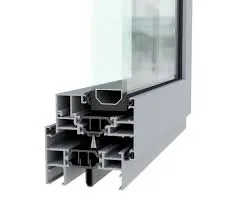Understanding the Composition and Properties of Wrought Iron and Its Uses in Construction
Understanding Wrought Iron Definition, Characteristics, and Applications
Wrought iron is a term often encountered in discussions of metallurgy and architectural history, yet its precise definition and significance may not be widely understood. At its core, wrought iron is a type of iron alloy that has been refined through a specific process, rendering it malleable and ductile. This unique combination of properties has made wrought iron a favored material throughout history for various applications, from industrial machinery to decorative architectural elements.
Definition and Composition
Wrought iron is composed primarily of iron, with a very low carbon content—typically less than 0.08%. This low carbon concentration distinguishes it from cast iron, which contains higher levels of carbon and is more brittle. The presence of slag in wrought iron, a by-product of iron smelting, contributes to its fibrous structure and unique characteristics. This slag is evenly distributed throughout the metal, enhancing its strength and durability while also making it less susceptible to corrosion.
Characteristics
The main characteristics of wrought iron include its ductility, malleability, and resistance to atmospheric corrosion. Ductility refers to the ability of a material to deform under tensile stress, which allows wrought iron to be shaped into various forms without breaking. Malleability, on the other hand, enables the material to be hammered or rolled into thin sheets. These properties make wrought iron ideal for forging and forming into intricate designs, which is why it has been a popular choice in decorative applications.
Moreover, wrought iron exhibits excellent weldability. When welded, it can fuse with other materials seamlessly, creating strong joints that maintain the integrity of the metal. This quality has made wrought iron a versatile choice in construction and artistic endeavors alike.
Historical Significance
wrought iron definition

The history of wrought iron dates back thousands of years, with evidence of its use in ancient civilizations such as the Greeks, Romans, and Chinese. During the Middle Ages, blacksmiths employed traditional techniques to shape wrought iron into tools, weapons, and hardware. The craftsmanship involved in creating wrought iron pieces became a revered skill, often leading to unique and ornate designs, especially in the realms of gates, railings, and furniture.
With the advent of the Industrial Revolution, wrought iron production evolved. The introduction of the puddling process allowed for mass production while still maintaining the material's desired characteristics. Wrought iron became essential in the construction of bridges, buildings, and railroads, playing a crucial role in shaping the modern world.
Applications
Today, wrought iron is still valued for its aesthetic appeal and structural integrity. It is often used in architectural applications such as ornamental gates, railings, and fences, where both durability and beauty are desired. In addition, wrought iron is employed in furniture design, with pieces ranging from sturdy tables to intricate light fixtures that showcase the artistry of the material.
Beyond aesthetic purposes, wrought iron is also utilized in various industrial applications, such as for creating machinery parts and tools where toughness and reliability are essential. Its ability to resist rust and corrosion further enhances its suitability in outdoor applications, ensuring longevity even in challenging environments.
Conclusion
In summary, wrought iron is much more than just a metal; it represents a unique blend of historical significance, aesthetic appeal, and practical application. With its low carbon content, malleability, and resilience, wrought iron has earned its place as a material of choice in both artistic and industrial domains. Understanding its definition and characteristics not only enriches our knowledge of metallurgy but also deepens our appreciation for the craftsmanship and innovation that have allowed wrought iron to endure through the ages.
-
Wrought Iron Components: Timeless Elegance and Structural StrengthNewsJul.28,2025
-
Window Hardware Essentials: Rollers, Handles, and Locking SolutionsNewsJul.28,2025
-
Small Agricultural Processing Machines: Corn Threshers, Cassava Chippers, Grain Peelers & Chaff CuttersNewsJul.28,2025
-
Sliding Rollers: Smooth, Silent, and Built to LastNewsJul.28,2025
-
Cast Iron Stoves: Timeless Heating with Modern EfficiencyNewsJul.28,2025
-
Cast Iron Pipe and Fitting: Durable, Fire-Resistant Solutions for Plumbing and DrainageNewsJul.28,2025
-
 Wrought Iron Components: Timeless Elegance and Structural StrengthJul-28-2025Wrought Iron Components: Timeless Elegance and Structural Strength
Wrought Iron Components: Timeless Elegance and Structural StrengthJul-28-2025Wrought Iron Components: Timeless Elegance and Structural Strength -
 Window Hardware Essentials: Rollers, Handles, and Locking SolutionsJul-28-2025Window Hardware Essentials: Rollers, Handles, and Locking Solutions
Window Hardware Essentials: Rollers, Handles, and Locking SolutionsJul-28-2025Window Hardware Essentials: Rollers, Handles, and Locking Solutions -
 Small Agricultural Processing Machines: Corn Threshers, Cassava Chippers, Grain Peelers & Chaff CuttersJul-28-2025Small Agricultural Processing Machines: Corn Threshers, Cassava Chippers, Grain Peelers & Chaff Cutters
Small Agricultural Processing Machines: Corn Threshers, Cassava Chippers, Grain Peelers & Chaff CuttersJul-28-2025Small Agricultural Processing Machines: Corn Threshers, Cassava Chippers, Grain Peelers & Chaff Cutters












